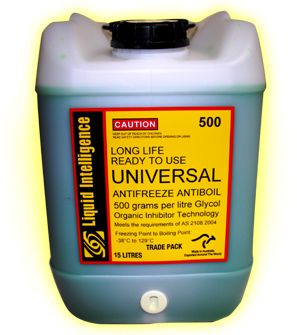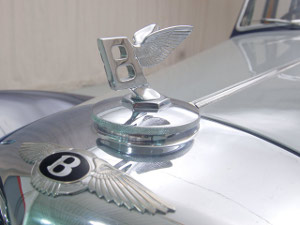Blown Head Gasket Test Kits


Peter Maher – The Man Behind Liquid Intelligence
Instant Phone Advice You can call Peter now on 1800 441 163 or 02 8188 2060 (7am to 7pm seven days a week – including public holidays – except Christmas Day) for a chat about product and application information or to simply purchase Liquid Intelligence.
For Instant Phone Advice
|
“Blown Head Gasket… How Do You Know?
For Only $66 You Can Know For Sure If You Have A Blown Head Gasket With Liquid Intelligence Super Sensitive Blown Head Gasket Test Kit”
Don’t Pay $1500 Or More On Expensive Blown Head Gasket Mechanical Repair Before You Know For Sure.Some Blown Head Gasket damage is very hard to correctly diagnose even for a mechanic… But this kit can let anybody positively identify head gasket damage in minutes.It Really Does Do Exactly What It Says
|
How Do You Really Know If You Have A Blown Head Gasket?
Many Cases Of Blown Head Gasket Have Few Or No Obvious Indicators.
This Super Sensitive Test Kit Accurately Confirms Even The Smallest Of Head Gasket Leaks

Everything You Need
Including Detailed Comprehensive Instructions Are Inside This Kit.
One of the main visual symptoms of head gasket damage is CO2 combustion gas bubbling in the radiator water. This is because head gasket damage typically occurs above one of the combustion chambers and generally breaches into the water jacket. This type of damage accounts for the greater proportion of all head gasket breaches. When combustion gas enters the cooling system through a head gasket breach, some of it finds its way to the top end of the cooling system where it accumulates in the top tank of the radiator or expansion tank.
This test kit can detect that escaping gas with a very high level of accuracy, even when there is no real noticeable bubbling in the radiator water, or when other head gasket damage indicators are not totally obvious.

Enough To Test 20 Vehicles
There is enough testing fluid in the 250ml bottle to test twenty vehicles for head gaskets damage.
The Liquid Intelligence 246 Blown Head Gasket Test Kit is designed for detecting or confirming small to medium head gasket breaches. And is not suitable for larger head gasket breaches. Larger breaches produce volcanic amounts of bubbling and high cooling system pressure which prevents this kit from being used successfully. However those larger breaches with extensive bubbling are already showing obvious symptoms of head gasket damage. Subsequently the test kit is not required to confirm that level of damage.

 |
Everything You Need Including Detailed Comprehensive Instructions Are Inside This Kit
 |
 |
 |
Preparing The Leak Tester For Use

Remove the top lid segment of the leak tester from the main chamber. Half fill the chamber to the fill line with the red test fluid and reassemble.
- The first test method is used for detecting or confirming small to medium head gasket breaches.
- The second test method is used when there is no real noticeable bubbling in the radiator water, or when other head gasket damage indicators are not obvious.
First Test Method – For Detecting or Confirming Small To Medium Head Gasket Breaches.
Open the radiator cap after the vehicle has cooled. Determine whether there is sufficient air space in the top of the radiator (the coolant level needs to be approximately 25mm below the radiator cap fitting) so that the rubber end of the testing unit can seat snuggly inside of the radiator filler neck without touching the coolant.
Important: Ensure coolant doesn’t splash into the Leak Tester – it will contaminate the test fluid and prevent it from working. After opening the radiator cap and checking (or correcting) the coolant level, insert the rubber end of the Leak Tester into the radiator filler neck. Turn the vehicle on and let it idle for about 10 minutes for petrol engines. And about 15-30 minutes for diesel engines.
As the CO2 combustion gas collects in the top end of the cooling system, it will then bubble up through the fluid in the testing chamber and cause a chemical reaction. If combustion gas is present, the red test fluid will turn yellow. And that would be a positive indication of head gasket damage.
However, if the test fluid stays red, then that’s usually a good indication that there is no head gasket damage. Although, it is possible that a negative test result can sometimes give a false no-damage indication. But that’s generally because some specific head gasket breaches are only open after the vehicle has reached its hottest full running temperature. That’s why we always suggest that a second CO2 combustion gas test be performed to confirm your original findings. But this time at higher temperatures and combustion pressures.
Second Test Method – For Situations Where There Is No Real Noticeable Bubbling In The Radiator Water, Or When Other Head Gasket Damage Indicators Are Not Obvious.
Open the radiator cap slowly after the vehicle has cooled. Determine whether there is sufficient air in the top of the radiator, as detailed in the “first test method” instruction. Then remove the top lid segment from the main chamber of the leak tester unit. Fill the chamber up to the fill line with the red test fluid and reassemble. Push the rubber end of the tester inside the radiator filler neck so it seats snuggly without touching the coolant.
Important: Ensure coolant doesn’t splash into the Leak Tester – it will contaminate the test fluid and prevent it from working. Start the engine and idle the vehicle up to full running temperature then accelerate approximately 10 to 15 times.
After each acceleration, allow the engine to slow for a few seconds before throttling up again. This procedure creates high combustion pressures in the engine and simulates full driving conditions. At this point, all the engine tolerances have expanded and become greater, and the accelerating has produced high combustion pressures.
If the red fluid in the chamber of the leak tester turns yellow, after 10-30 minutes, that’s a positive indication that it has detected CO2 combustion gas. And that would also confirm a breach in the head gasket above one of the combustion chambers, breaching into the cooling system’s water jacket. This type of head gasket damage is very common.
Next… Chemical Versus Mechanical.
Once you have confirmed that your vehicle has head gasket damage, then your options are either to chemically repair the head gasket or replace it.
If you decide on a mechanical fix, then the average cost of a head gasket replacement is between $2,000 to $10,000, depending on the make and model of the vehicle. The high costs involved in head gasket replacement normally stem from the amount of labour required, rather than the cost of replacement parts… and if the re-sale value of a vehicle is similar to the cost of replacing the head gasket, it’s quite often easier and cheaper to send it off to the wreckers.
Before you decide to spend the money on a head gasket replacement we would first suggest you investigate the possibility of fixing it yourself with our (“DIY”) chemical head gasket repair. In fact, you should be able to fix it yourself in a few hours for a bit more than $100, and it should last for years.
If you decide to try our unique chemical repair, then the next step is work out how badly the head gasket is damaged… and the best way of gauging the extent of the damage, is by the frequency and size of the bubbling in the radiator water, with the cap off and the engine idling at full running temperature.
Here Are Four Examples Of Combustion Gas Bubbling In The Radiator.
These images illustrate varying degrees of a head gasket damage. Use this information to estimate the extent of your head gasket breach.The frequency and size of this bubbling is a direct correlation to the size of the head gasket breach. Whilst some head gasket damage can be substantial and may require the head gasket to be replaced. Most head gasket damage is very minimal and doesn’t necessarily need to be replaced. Once you understand how badly it has been damaged you will be able to decide if our do it yourself (“DIY”) chemical head gasket fix is a logical alternative to an otherwise very expensive mechanical repair.
 |
Small Single Bubblesor champagne type bubbling, signify a pin hole breach above one of the combustion chambers breaching into the cooling system. This level of damage can be repaired using our Liquid Intelligence 245 Blown Head Gasket Solution. “Customer Feedback” suggests that the success of repairing this level of head gasket damage is almost 100%. Plus the repair generally lasted between two to five years. |
 |
Medium Size Bubbleswith constant or variable frequency signify an average breach above one of the combustion chambers breaching into the cooling system. This level of damage can be repaired using our Liquid Intelligence 245 Blown Head Gasket Solution. “Customer Feedback” suggests that the success of repairing this level of head gasket damage is about 90%. Plus the repair generally lasted about two years. |
 |
Larger Size Bubbleswith constant and high frequency signify a sizable breach above one of the combustion chambers breaching into the cooling system. This level of damage may be possible to repair using our Liquid Intelligence 245 Blown Head Gasket Solution. However,“Customer Feedback” suggests that the success of repairing this level of head gasket damage is about 70% to 80%… and the repair generally lasted about one year. |
 |
Constant Larger Bubblesthat could be described as a volcanic eruption signify a very sizable breach above one of the combustion chambers breaching into the cooling system. This level of damage may be possible to repair using our Liquid Intelligence 245 Blown Head Gasket Solution However,“Customer Feedback” suggests that the success of repairing this level of head gasket damage is between 50% or 60%… and there is a possibility that it could last from months to a year. |
Next… Chemical Versus Mecanical
Your options are now either to chemically repair the head gasket or replace it.
If you decide on a mechanical fix, then the average cost of a head gasket replacement is between $2,000 to $10,000, depending on the make and model of the vehicle. The high costs involved in head gasket replacement normally stem from the amount of labour required, rather than the cost of a replacement parts.
But before you decide to spend the money on a head gasket replacement. We would first suggest you investigate the possibility of fixing it yourself with our Liquid Intelligence 245 (“Do It Yourself”) Blown Head Gasket Repair.
Whilst some head gasket damaged can be substantial and requires the head gasket to be replaced. Most head gaskets damage is very minimal and doesn’t need to be replaced. Now that you understand how badly your head gasket has been damaged, you will be able to decide if our Liquid Intelligence 245 Blown Head Gasket Repair is a logical alternative to an otherwise very expensive mechanical repair. In fact, you should be able to fix it yourself in a few hours for a bit more than $100, and the repair could last for years.
Chemical Head Gasket Fix Using “Liquid Intelligence 245”

Liquid Intelligence 245 is produced from compounds based primarily on high-temperature resistance, long chain polymers and plasticizers. Its chemical composition gives it strength and lasting durability with flexibility enough to withstand an engine’s expansion and contraction, without cracking or degrading. Liquid Intelligence 245 is added into the cooling system in conjunction with water and allowed to circulate up the full running temperature. The cooling system’s vapour pressure injects the solution into and around the damaged head gasket. The water content of the solution is vaporised on the internal walls of the breach, which concentrates the chemicals and allows them to react under heat and pressure and form a durable seal.
The success rate of using our Liquid Intelligence 245 Blown Head Gasket Chemical Repair on minimal head gasket damage can be almost 100%, but the statistics do reduce with larger breaches. The Liquid Intelligence 243 Sealing Aid Optimizer can be used in conjunction with the 245 to enhance its sealing ability… and this combination is primarily recommended to be used on narrow or larger head gasket breaches.
The Liquid Intelligence 245/243 Blown Head Gasket Chemical Repair is uniquely formulated to give resilient long-lasting results and has been extensively used for repairing all types of head gasket damage in all types of vehicles… but given that almost every vehicle with a blown head gasket can present with different symptoms and gradations of damage. We usually first like to discuss the vehicles head gasket problem in detail after you have gauged its type and severity, so we can confirm that the Liquid Intelligence 245 could work successfully for you… and then also suggest an individual method of applying Liquid Intelligence 245 that best suits your vehicle and it’s specific damage. Only in this way can we guarantee the best possible long term results. (Call Peter Maher on 1800 441 163 or 02 8188 2060 to confirm the suitability of this kit for your vehicle – Comes complete with full phone technical support.
Accurately Confirmed A Small Head Gasket Leak
The video shows the blown head gasket test apparatus placed in expansion bottle of the vehicles cooling system. And on the left hand side of the apparatus is a bottle of the red test fluid. After about ten minutes of idling, the head gasket leak allowed enough CO2 combustion gas pressure to slowly build up in the expansion bottle. Which then allowed the gas to bubble up through the testing apparatus, turning the red test fluid yellow. And that was a positive indication that this vehicle had head gasket damage. |
Your Coolant May Have Caused The Head Gasket Damage
Most people suspect that their head gasket damage was caused from an overheating issue… and that can be the case, however its normally a result of years of cooling systems neglect… particularly if the vehicle has only ever used water or low active glycol coolants. Low active or no glycol based coolants cause cavitation erosion and also corrosion which will eventually erode and destroy the integrity of a head gasket. Which then allows combustion gas to leak into the cooling system.
 |
As a demonstration we poured some cheap low glycol coolant on to a hot plate at 110°C |
 |
The cheap low glycol coolant instantly turned to vapour. |
 |
Liquid Intelligence 500 was added beside the cheap coolant sample. This test is evidence of its anti-vapour uniqueness.Liquid Intelligence 500 prevents vapour and eliminates further head gasket damage from cavitation erosion. |
 |
Liquid Intelligence 500 prevents vapour and eliminates further head gasket damage from cavitation erosion. |
As you can see from these simulated demonstrations, cheap low active glycol-water based coolants will boil on the internal walls of an engines cooling system. When this happens under pressure these inadequate coolants form a layer of vapour… and that vapour acts like an insulator, reducing the overall efficiency of the cooling system, causing elevated temperatures. These elevated temperatures effect the masses of vapour bubbles that form causing them to implode, generating trillions of intense micro shock waves. This results in erosion and pitting damage over time on all the softer cooling systems metals, includes head gasket material.
Subsequently, most vehicles develop head gasket damage from cavitation erosion. It’s also acknowledged that there may be similar damage on other parts of the now weakened head gasket that have not as yet advance into a breach.
So, after fixing your head gasket breach, we strongly suggest that you then consider using our Liquid Intelligence 500 Coolant. It is designed and formulated to eliminate cavitation erosion. It’s special attributes will prevent the other areas with head gasket damage from progressing and causing further problems in the future. It’s an essential part of the cooling systems long term restoration and should also help the Liquid Intelligence 245 head gasket repair last for years.
Before You Do Anything…Give Us A RingAnd tell us why you suspect you have a blown head gasket. It might be that your cars symptoms definitely indicate head gasket damage. In which case, you may not even need a test kit. If it is obvious that your head gasket is damaged… “DON’T PANIC” Because… There are varying degrees of head gasket damage… some of which you could easily repair at home for a little over $100. So call us at Liquid Intelligence on 1800 441 163 or 02 8188 2060 (7am to 7pm seven days a week) we maybe be able to help you fix it yourself… quickly and cheaply. |
This Kit Will Work For All Liquid Cooled Internal Combustion Engines Including:
- Petrol Vehicles
- Diesel Vehicles
- LPG Vehicles
Also this kit could be your second opinion to verify what your mechanic is saying… keep them honest.
Even if the head gasket test was found to be positive… there are varying degrees of head gasket damage… some of which can actually be easily repaired at home for a little over $100.
|
||||||||||||
Don’t Pay Up To $190 For Other Test Kits Which Provide Similar Results.
If you take your car to a mechanic he may quote you as much as $200 just to diagnose your problem as being a blown head gasket.
So…
If your car is worth around $1500 or $2000 you may not think it is worth it to fix the blown head gasket… you just want to take the plates off and walk away.
But…
You will still have to pay the $200 for the investigation.
To save the hassle and the expense, this kit will tell you what you need to know.
This Product Comes With A Technician On TapOur free technical support can advise you every step of the way… And we may also be able to advise you on how you can easily repair your head gasket damage at home for a little over $100. |

Liquid Intelligence A Trusted Brand.Open Road….NRMA’s bi-monthly Magazine Open Road is exclusive to NRMA Members. It’s jam packed with the issues affecting motorists right now, up-to-the-minute car advice, and inspirational travel stories and ideas. It also contains the latest news about NRMA, and product information of trusted brands that could benefit NRMA members. Liquid Intelligence is one of those trusted brands that advertises in the open road. |
Who Is This For?
This is a home test kit for people who want a quick and inexpensive confirmation of a blown head gasket.
Pretty much anyone can use this kit… which performs a similar test to the expensive equipment used by professional garage mechanics.
It can also be used as a second opinion to verify what your mechanic has told you.
This is an easy test that can be used up to five times.
An Informative Customer Review Of A Liquid Intelligence Blown Head Gasket Test Kit
Full Product SupportIf you would like to discuss your blown head gasket issue simply contact our Technical Support Team by phone: 1800 441 163 or 02 8188 2060. We are available from 7am to 7pm Monday to Friday and we are happy to answer any questions. |
We Are Unique… Nobody Else Does This… Call As Often As Needed—We’re Always Here To Help!… From Start to Finish—”BEFORE, DURING & AFTER”, We’re Here to help Every Step of the Way!Whether you have questions before, during, or after using our products, our technical support team is ready to assist you from 7am to 7pm seven days a week. |
Peter Maher’s Minchinbury Wharehouse Office Webcam
|
Webcam Minchinbury Office Webcam: Call Peter, he is in the office today. In our Sydney office it is now:
|
|
||||||||||||
|

Peter Maher – The Man Behind
Liquid Intelligence You can call Peter now on 1800 441 163 or 02 8188 2060 (7am to 7pm seven days a week) for a chat about product and application information or to simply purchase Liquid Intelligence.
|
 |
 |
Written by Peter MaherPeter Maher, has been in the chemical industry since he was 18. So that’s more than 40 years he’s been blending, manufacturing and formulating functional automotive and industrial fluids. |
Click On The Product Or Issue That Interests You From The Grid Below
Liquid Intelligence 126 Silicone Brake Fluid Dot 5
|
Liquid Intelligence 115 Super Waterless Coolant – Guaranteed No Overheating
|
Liquid Intelligence 115 Motorcycle Super Waterless Coolant – Guaranteed No Overheating
|
Liquid Intelligence 201 Diesel Fuel Bacteria & Fungi Biocide
|
Liquid Intelligence Microbial Field Test kit
|
Liquid Intelligence 204 Diesel Moisture Absorbent
|
Liquid Intelligence 207 Diesel Fuel Cetane Booster
|
Liquid Intelligence 218 Diesel Purge And Restore Fuel System Cleaner Super Concentrated Formula Improves Performance & Power In Just One Treatment
|
Liquid Intelligence 219 Super Concentrate Engine Flushing Additive
|
Liquid Intelligence 224 Lifter-Free Engine Oil Additive Stops Lifter Clacking. Guaranteed.
|
Liquid Intelligence 229 Diesel Fuel Pump Seal Leak Fix
|
Liquid Intelligence 230 Stop Oil Leak Seal Expander
|
Liquid Intelligence 230 PLUS – Stop Oil Leaks – Gear Oil Grade
|
Liquid Intelligence 235 Hydraulic Stop Leak Seal Expander
|
Liquid Intelligence 236 Anti-Shudder Additive for Auto Transmissions
|
Liquid Intelligence 237 ZDDP Engine Oil Additive
|
Liquid Intelligence 238 Cooling Systems Oil Sludge Remover
|
Liquid Intelligence 239 Engine Cooling System Cleaning Kit
|
Liquid Intelligence 240 Organic Rust Remover is the fastest way to totally remove rust from metal without damaging the original piece.
|
Liquid Intelligence 243 Radiator Stop Leak Repair Kit Fixes Leaks In Cooling Systems And Radiators Guaranteed.
|
Liquid Intelligence 245 Blown Head Gasket Repair
|
Liquid Intelligence 245 Blown Head Gasket Repair with Sealing Aid Optimizer.
|
Liquid Intelligence 246 Blown Head Gasket Test Kit |
Liquid Intelligence 318 Racing Brake Fluid
|
Liquid Intelligence 500 Latest Generation Technology, Long Life Ready To Use Green Universal Antifreeze Anti-Boil Coolant
|
Liquid Intelligence 600 Vintage & Veteran Super Soluble Oil Radiator Coolant
|
Liquid Intelligence 719 Car Air Conditioner Sanitizer and Deodorizer
|








 Liquid Intelligence products are the BEST OF THE BEST. They have the highest degree of efficiency, activity and functionality, compared to any similar retail grade product.
Liquid Intelligence products are the BEST OF THE BEST. They have the highest degree of efficiency, activity and functionality, compared to any similar retail grade product. Unbeatable personal technical advice and support: “You Are Not Alone… When you ring us “We Are Here To Help You” get that problem sorted.
Unbeatable personal technical advice and support: “You Are Not Alone… When you ring us “We Are Here To Help You” get that problem sorted. Technical support staff with more than 40 years experience in the industry.
Technical support staff with more than 40 years experience in the industry. Made in Australia by an Australian business and exported around the world.
Made in Australia by an Australian business and exported around the world.



















































 Applies to most of our popular products where you see this icon in the "add to cart" box
Applies to most of our popular products where you see this icon in the "add to cart" box